Utilising a new matrix system – Nikhil Sethi from Square Mile Dental Care
Featured Products Promotional FeaturesPosted by: Dental Design 1st July 2019
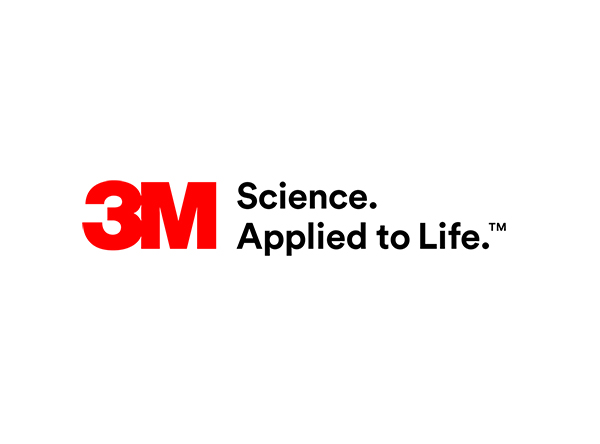
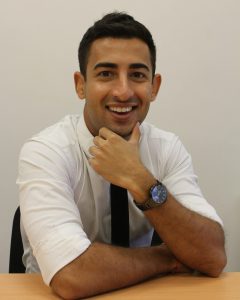 Nikhil Sethi from Square Mile Dental Care, describes a case showing the treatment of distal caries on an upper first pre-molar…
Nikhil Sethi from Square Mile Dental Care, describes a case showing the treatment of distal caries on an upper first pre-molar…
The Bioclear posterior clear matrix system has been designed to produce a more natural proximal form and allow an injection moulding technique. This case details the approach and rationale of the treatment of distal caries and shows the final result of the successful treatment.
Case presentation
A 42-year-old male patient presented with localised pain brought on by cold liquids and sweet foods lasting seconds only. There were no persistent or spontaneous symptoms. Clinically, the upper left first pre-molar had a grey appearance distally and, under microscope, distal caries was detected. Vitality testing showed an exaggerated response to cold and the bitewing radiograph showed a distal large radiolucency. Distal caries and reversible pulpitis was our diagnosis on the upper left first pre molar. After discussion and presenting the options for treatment, the patient agreed with our preferred plan to clean the affected area and restore with a tooth coloured aesthetic restoration.
Treatment
The first stage of treatment was to isolate the affected tooth with a rubber dam to ensure a clear field of access and excellent isolation for the adhesive procedure to follow (Figure 1). The dental caries was removed without damaging the adjacent tooth (Figure 2). The margins were then accurately cleaned with polishing strips and ultrasonics, to create a smooth surface to bond to (Figure 3).
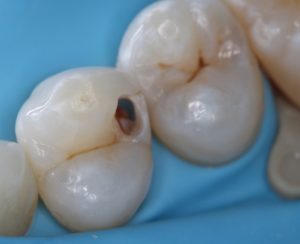
Figure: 1
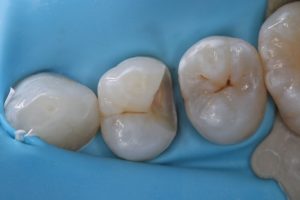
Figure: 2
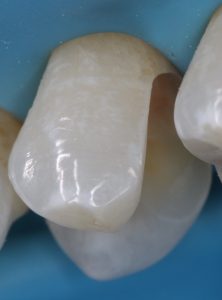
Figure: 3
The clear Biofit 5.5mm band was placed and secured with a yellow diamond wedge and a yellow Bioclear posterior ring (Figures 4 & 5). The adhesive protocol was then followed for a self-etch technique after selectively etching the enamel with Ultra-Etch phosphoric acid (Ultradent) and washing for 45 seconds.
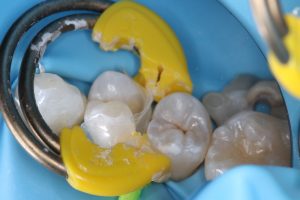
Figure: 4
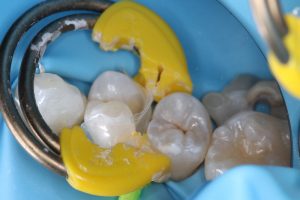
Figure: 5
Once this stage was a completed, a small drop of 3M Filtek Supreme XTE Flowable composite in shade A1 was placed on the dentine and allowed to level before 20 seconds of light curing, which was performed to reduce surface tension and improve adaptability for the next increment. As per the Bioclear technique, a small amount of flowable composite was applied at the join of the band and the proximal box, and heated (Figure 5 & 6). Filtek XTE Universal A3 restorative (3M Oral Care) was then placed using the injection moulding technique. This technique is intended to restore the whole cavity in one go. However, the clinician prefers to overflow the composite into the proximal area to ensure no air voids, then carefully remove excess to limit the increment just to the proximal surface, leaving the occlusal for the next increments. This modification of the technique is designed to reduce the stresses of light curing and allow a controlled occlusal layering technique for better aesthetics. A conventional Class I restorative protocol was followed using the same shade to conclude treatment. A very small amount of flowable fissure stain was used to enhance the fissure pattern for increased aesthetics. The dam was removed, the restoration was polished and the occlusion and contacts were checked. The final photo shows the restoration after 1 month (Figure 8).
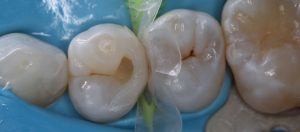
Figure: 6
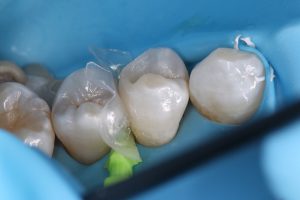
Figure: 7
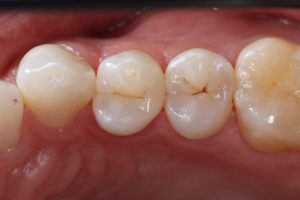
Figure: 8
The patient was very happy with the final result. He was given oral hygiene instruction and advised to maintain regular check-ups with the dentist / hygienist in order to encourage longevity of the restoration and general dental health.
For more information, call 0845 602 5094 or visit www.3M.co.uk/Dental
Author bio:
Nik Sethi qualified from King’s College London in 2009. He has a Master of Science degree in aesthetic dentistry, also at King’s College London.
Nik is an associate member of the British Academy of Aesthetic Dentistry and is regularly featured in Dentistry Magazine, writing a series of articles aimed at educating younger dentists. Nik also has extensive experience with treating children and nervous patients, and through working closely with our implantologist and orthodontist he is able to provide a comprehensive range of restorative treatment to the highest standard.
No Comments
No comments yet.
Sorry, the comment form is closed at this time.



